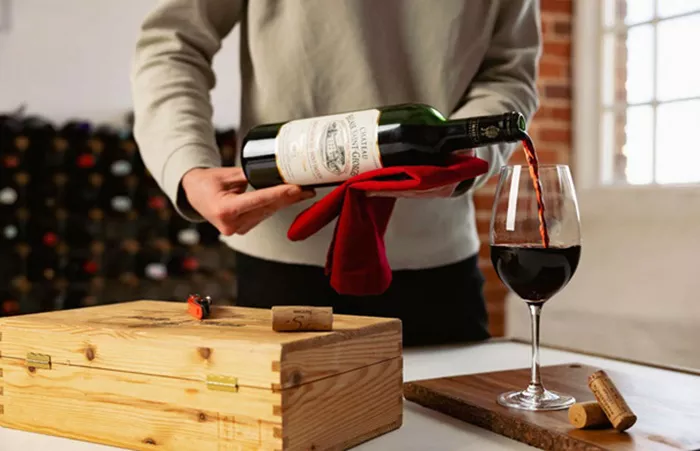Sparkling rosé and Champagne are two popular sparkling wines enjoyed around the world. Many people wonder if these two types of wine are the same. While both are bubbly and delicious, they have distinct differences in their production, flavors, and origins. Understanding these differences can enhance your wine experience. This article will explore the unique qualities of sparkling rosé and Champagne, helping you appreciate each one.
Understanding Sparkling Rosé
Sparkling rosé is a type of wine that combines the refreshing qualities of rosé with the effervescence of sparkling wine. It can be made from various grape varieties, including Pinot Noir, Grenache, and Syrah. The production of sparkling rosé typically involves two main methods: the traditional method and the Charmat method.
In the traditional method, winemakers produce sparkling rosé by performing a secondary fermentation in the bottle. This process creates the bubbles we enjoy in sparkling wines. The grapes are first fermented to create a still rosé. Then, a mixture of sugar and yeast is added before sealing the bottle. This initiates the secondary fermentation, which produces carbon dioxide, giving the wine its bubbles.
The Charmat method, on the other hand, involves conducting the secondary fermentation in large tanks rather than individual bottles. This method is faster and more cost-effective, resulting in a fresher and fruitier flavor. Sparkling rosé made using the Charmat method is often lighter and more aromatic, appealing to those who prefer a more vibrant taste.
Exploring Champagne
Champagne is a prestigious sparkling wine that comes exclusively from the Champagne region of France. The term “Champagne” is legally protected, meaning only wines produced in this area can bear the name. Champagne is made primarily from three grape varieties: Chardonnay, Pinot Noir, and Pinot Meunier.
Like sparkling rosé, Champagne is also produced using the traditional method. This process involves several steps, including the initial fermentation to create a still wine, blending different vintages, and the secondary fermentation in the bottle. The aging process for Champagne is more extended, with a minimum requirement of 15 months for non-vintage Champagne and three years for vintage Champagne.
The flavors of Champagne can vary greatly depending on the grape blend and the aging process. You might taste notes of apple, pear, citrus, and even toasted bread. The complexity and depth of Champagne make it a unique experience compared to other sparkling wines, including sparkling rosé.
See Also: How to Make Sweet Sparkling Wine?
Comparing the Two
Production Differences
One of the most significant differences between sparkling rosé and Champagne lies in their production methods. While both can be made using the traditional method, the specific techniques and regulations for Champagne are more stringent. The aging process for Champagne also contributes to its distinctive flavor profile. In contrast, sparkling rosé can have a quicker turnaround time, especially when made using the Charmat method.
Flavor Profiles
Flavor is another key difference between these two wines. Sparkling rosé typically offers bright, fruity flavors and aromas, making it refreshing and easy to drink. It often carries notes of strawberries, raspberries, and other red fruits. The sweetness level can also vary, with some sparkling rosés being dry and others more off-dry or sweet.
Champagne, however, presents a more complex flavor profile. The aging process introduces richer flavors, including brioche, nuts, and honey. The higher acidity of Champagne adds to its crispness and makes it a versatile food pairing wine. While sparkling rosé is often enjoyed on its own, Champagne can complement a wide range of dishes, from seafood to desserts.
Price and Prestige
When considering sparkling rosé and Champagne, price can be a deciding factor for many consumers. Champagne is generally more expensive than sparkling rosé due to the strict regulations, labor-intensive production, and the prestige associated with the Champagne name. Many consumers view Champagne as a luxury item, often reserved for special occasions.
Sparkling rosé, on the other hand, is typically more affordable. This accessibility makes it a popular choice for casual gatherings and celebrations. While there are high-end sparkling rosés, the variety of price points makes it easier for consumers to find a wine that fits their budget.
Food Pairing
Both sparkling rosé and Champagne are excellent choices for food pairing, but they excel with different types of cuisine. Sparkling rosé’s fruity and refreshing qualities make it a fantastic match for light dishes, such as salads, grilled chicken, and seafood. It can also complement spicy foods, as the bubbles can help cut through the heat.
Champagne’s versatility allows it to pair well with a broader range of dishes. The acidity and complexity of Champagne make it an excellent choice for richer foods, such as creamy cheeses, oysters, and fried foods. The pairing possibilities with Champagne are nearly endless, making it a favorite among food enthusiasts.
Conclusion
In conclusion, sparkling rosé and Champagne are both delightful sparkling wines, but they are not the same. Each has its unique characteristics, production methods, and flavor profiles. Sparkling rosé is typically fruitier and more accessible, while Champagne offers a depth of flavor and complexity associated with its long-standing tradition. Understanding these differences can enhance your appreciation for both wines. Whether you choose sparkling rosé for a casual gathering or Champagne for a special occasion, each offers a unique experience worth exploring.
You Might Be Interested In:


